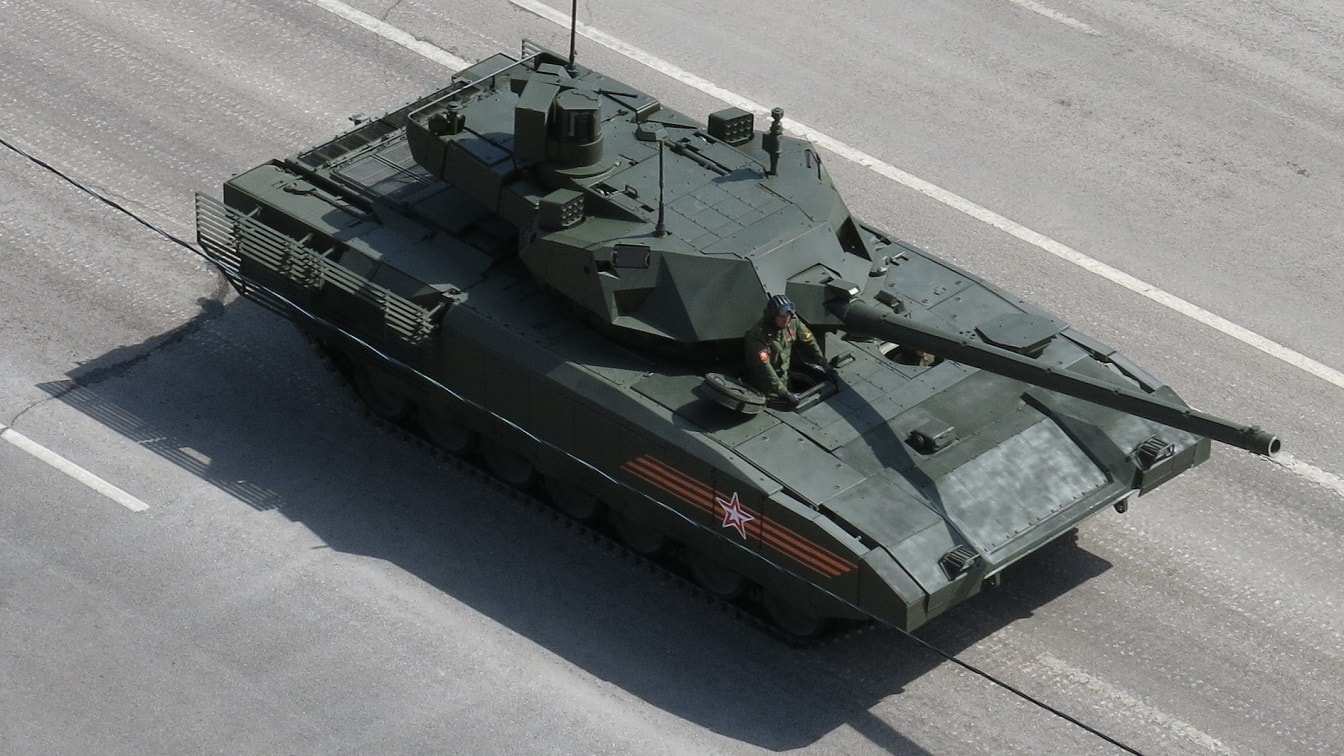Russia’s T-14 Armata tank has been the subject of much hype and speculation.
And yet, there are many unknowns related to the main battle tank’s combat performance and the effectiveness of its technologies.
With reports that the tank is now fighting in Ukraine, many are likely to wonder how it will perform against tanks used by Ukraine, anti-armor weapons, and even air attacks from drones.
Russia’s Tanks Against U.S. and Allies
Russian media reports claim the T-14 is lighter, faster, and more deployable at 55 tons, much lighter than the 70-ton U.S. Abrams.
The T-14 is also reported to be faster than most tanks with speeds up to 55mph, something that enables greater mobility in support of infantry crossing bridges, traveling through urban areas, or more narrow passageways.
The question is whether the T-14 is less survivable due to its being lighter weight than an Abrams, something that likely depends upon its armor configuration and countermeasures such as active protection systems.
How would a T-14 perform in combat against an export variant of the US Abrams? Interestingly, the effectiveness of tanks in warfare pertains heavily to the range and resolution of their thermal sights. During the famous tank battles in the Gulf War, the U.S. Abrams was able to see and destroy Iraqi T-72s at ranges where it could not be seen itself, an advantage that enabled the tank to prevail in tank-on-tank battles.
As for the T-14, Russian news reports such as GRU Pycckoe, say the T-14 thermal targeting sights can detect and destroy targets during the daytime out to ranges of 5km and can reach 3.5km at night.
While, quite naturally, the range and particular technical capabilities of the U.S. Army’s emerging tank sights are not available for security reasons, upgraded variants of the Abrams have advanced forward-looking infrared sensors and thermal sights likely able to operate at considerable ranges.
Abrams vs T-14 Weapons
As for its weapons, a report in Popular Mechanics from several years ago says the T-14’s new, now-in-development 3UBK21 Sprinter missile can hit ranges of more than seven miles, according to the report.
The Armata’s current round, the 9M119 Reflecks, has a range of 3.1 miles (roughly comparable to the current Abrams) and can penetrate up to 900 millimeters of armor, Popular Mechanics writes.
A report from hotcars.com, presents a number of interesting technical facts about the Armata, including its 1,500-2,000 horsepower diesel engine.
The article argues that its engine is more powerful than a U.S. Abrams due to its having a better thrust-to-weight ratio, meaning that a 1,500-horsepower Armata engine drives a 55-ton tank, whereas an Abrams 1,500 horsepower turbo gasoline engine powers a heavier tank at 70-tons.
The largest advantage of the T-14, however, may be its unmanned turret, which of course greatly reduces risk otherwise associated with having a manned gunner on top of the tank.
Unmanned turrets, perhaps using a high degree of automation, robotics, and human controls from the main crew compartment, have been under development in the U.S. for many years, so it is not clear how much of an advantage that might be, if any.
Kris Osborn is the Military Affairs Editor of 19FortyFive and President of Warrior Maven – Center for Military Modernization. Osborn previously served at the Pentagon as a Highly Qualified Expert with the Office of the Assistant Secretary of the Army—Acquisition, Logistics & Technology. Osborn has also worked as an anchor and on-air military specialist at national TV networks. He has appeared as a guest military expert on Fox News, MSNBC, The Military Channel, and The History Channel. He also has a Masters Degree in Comparative Literature from Columbia University

